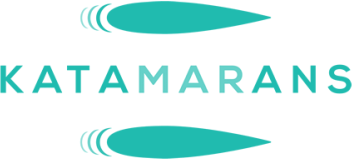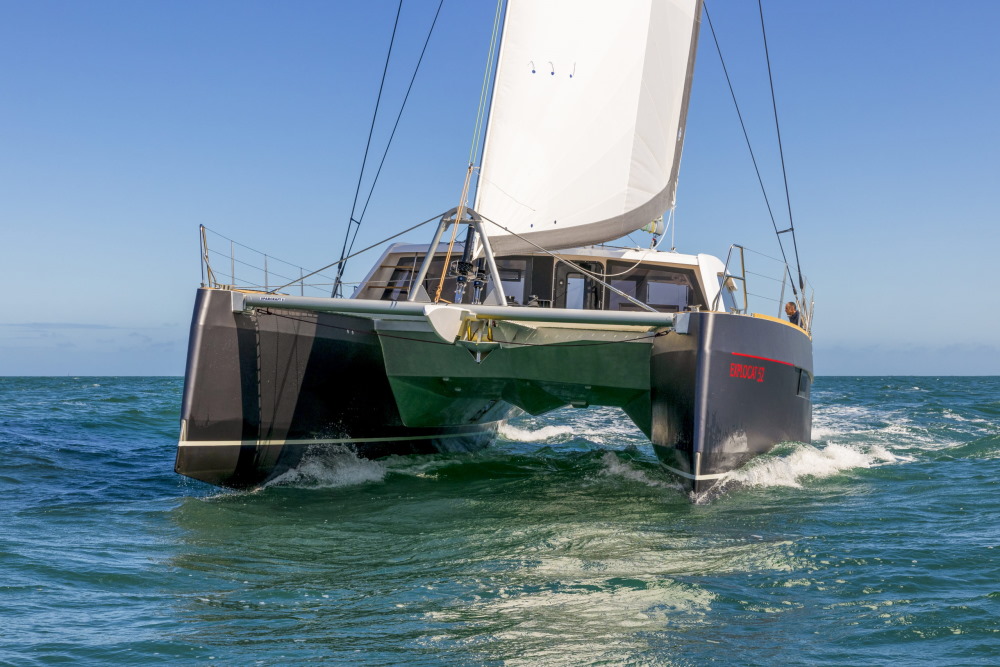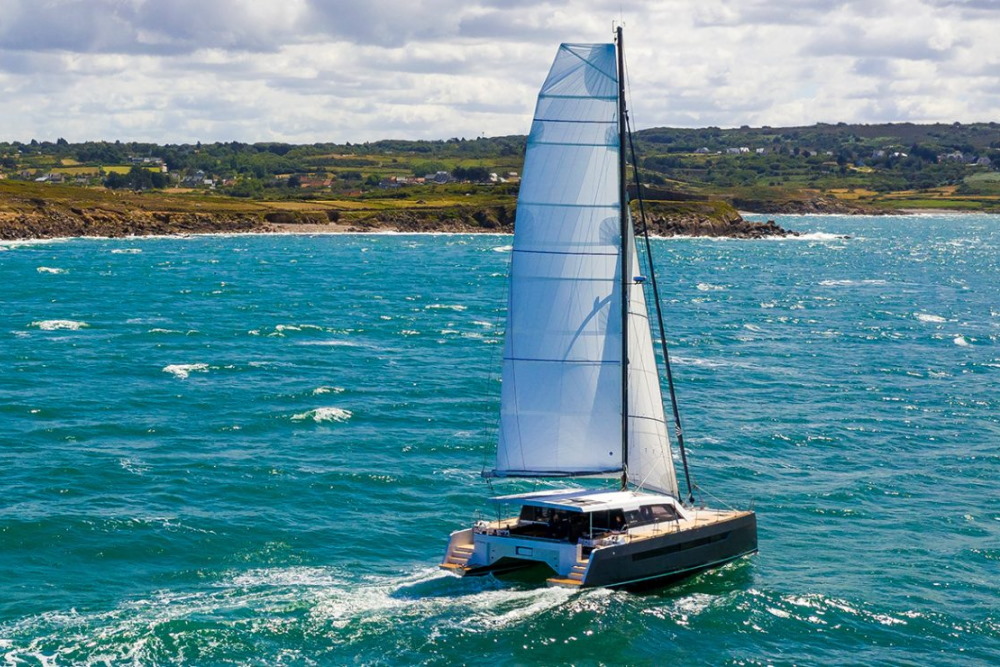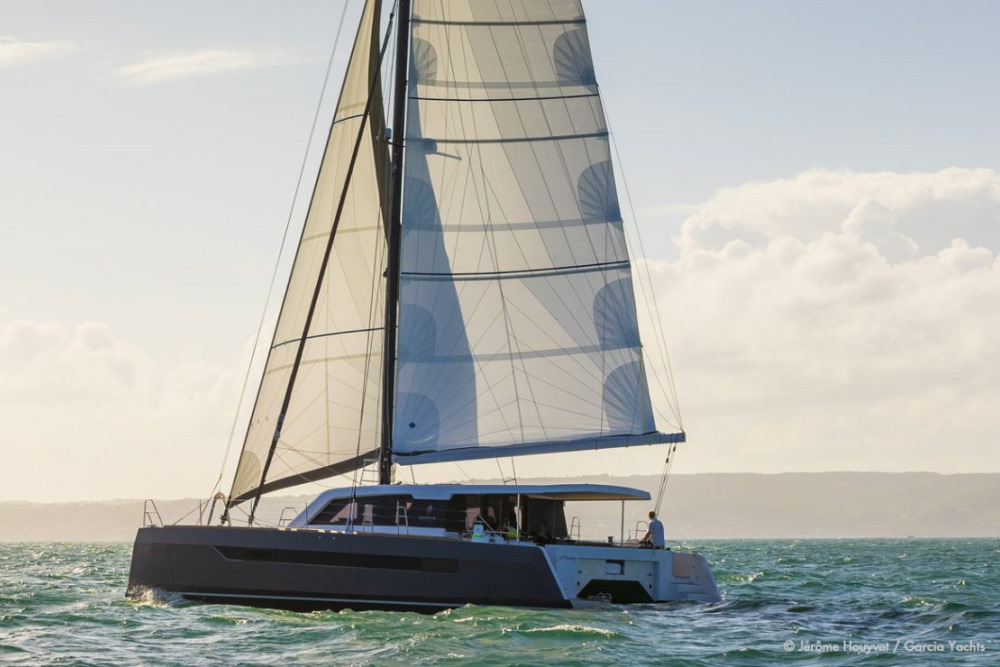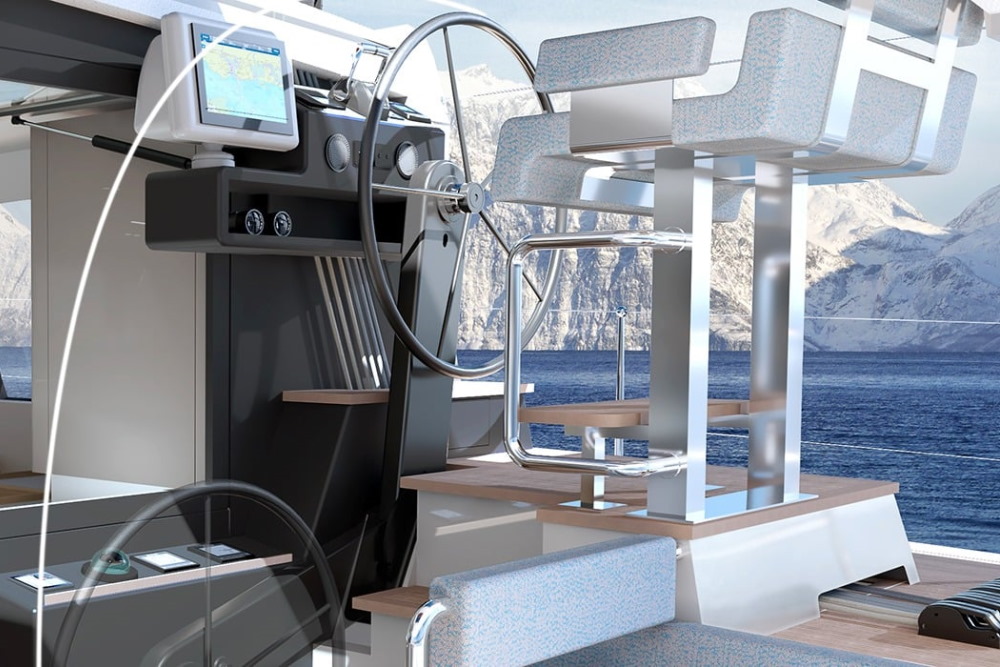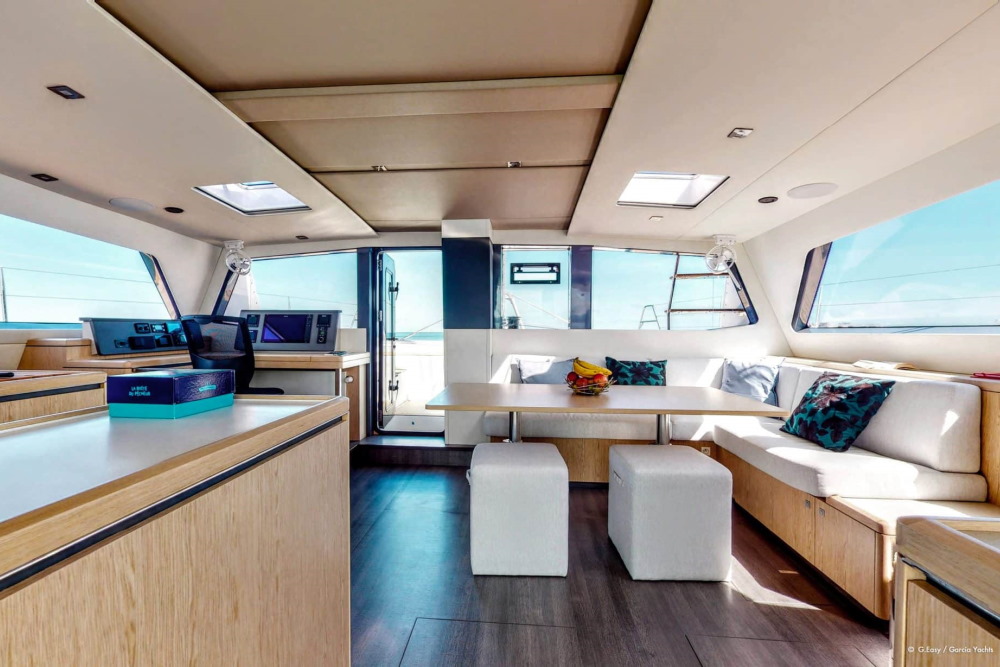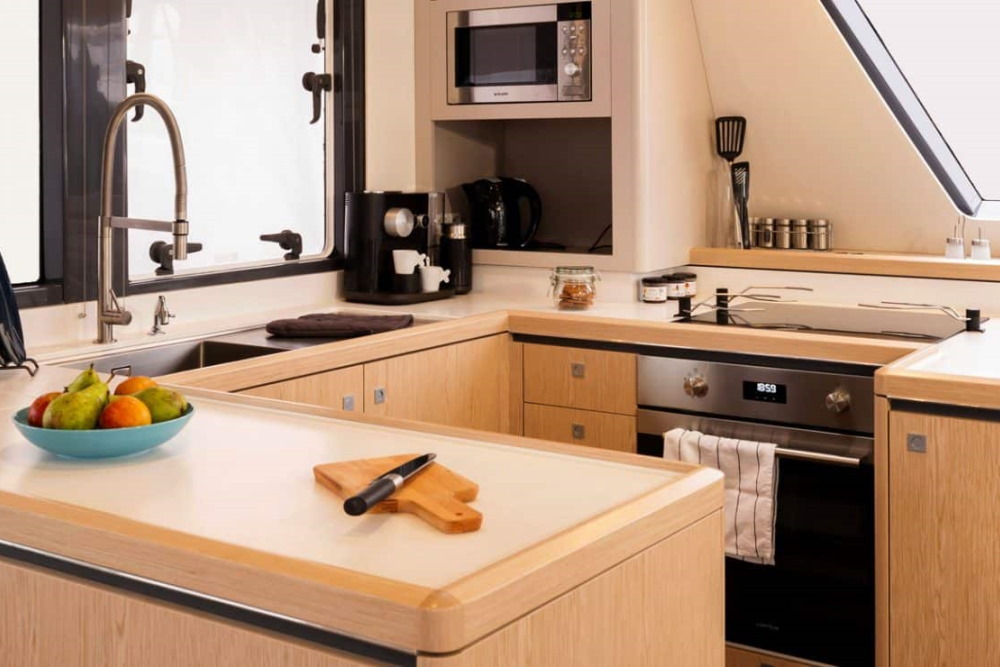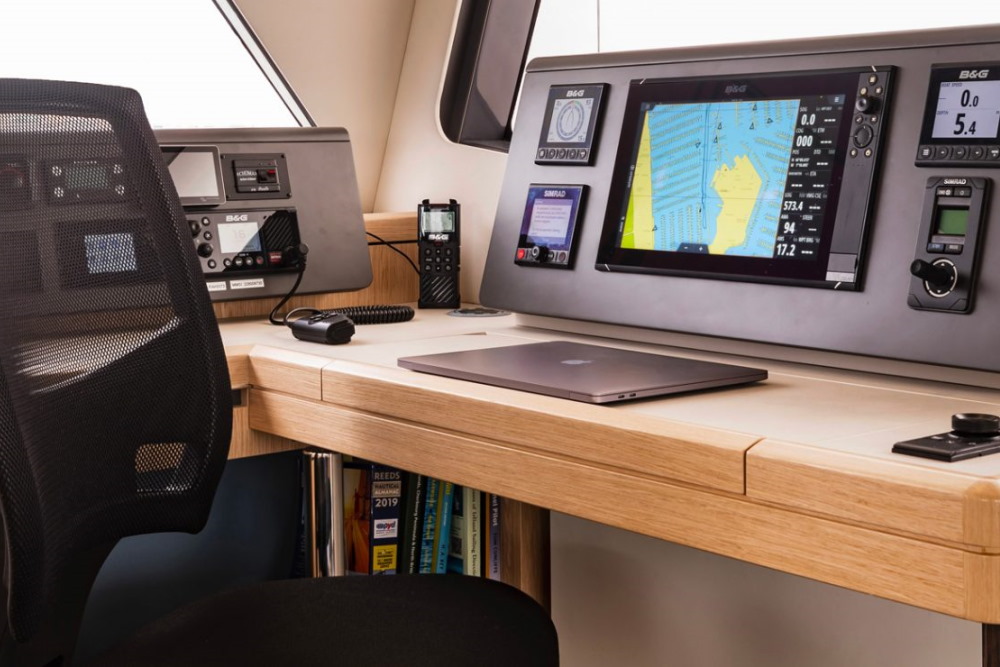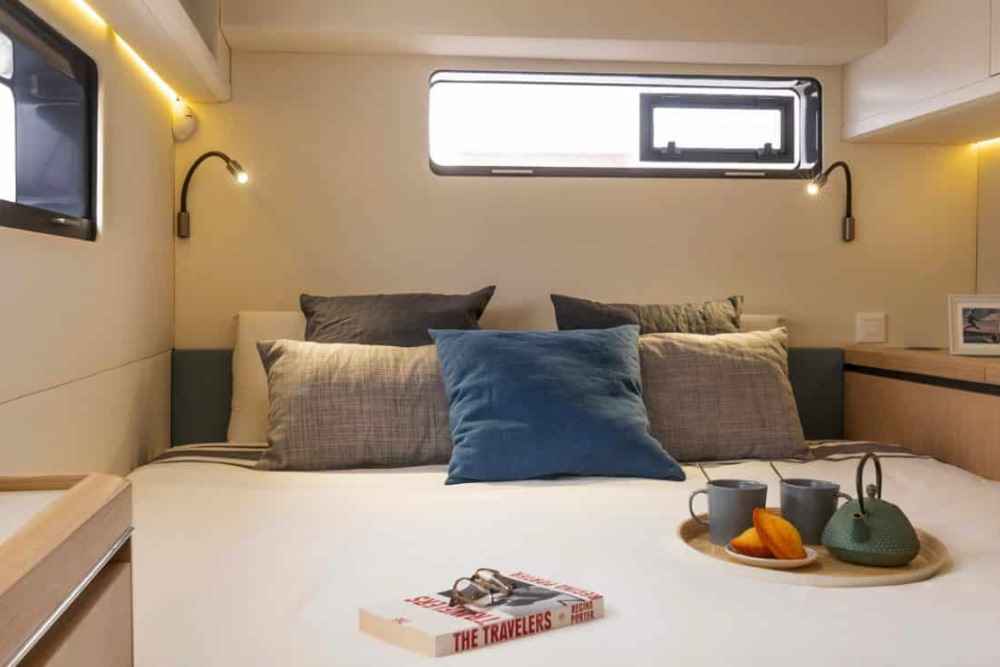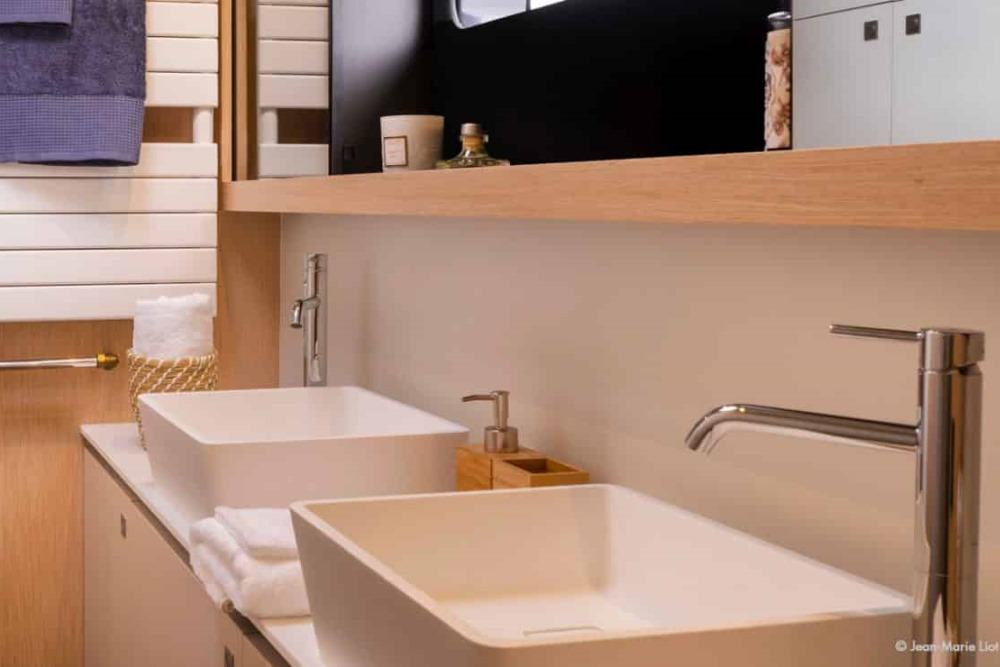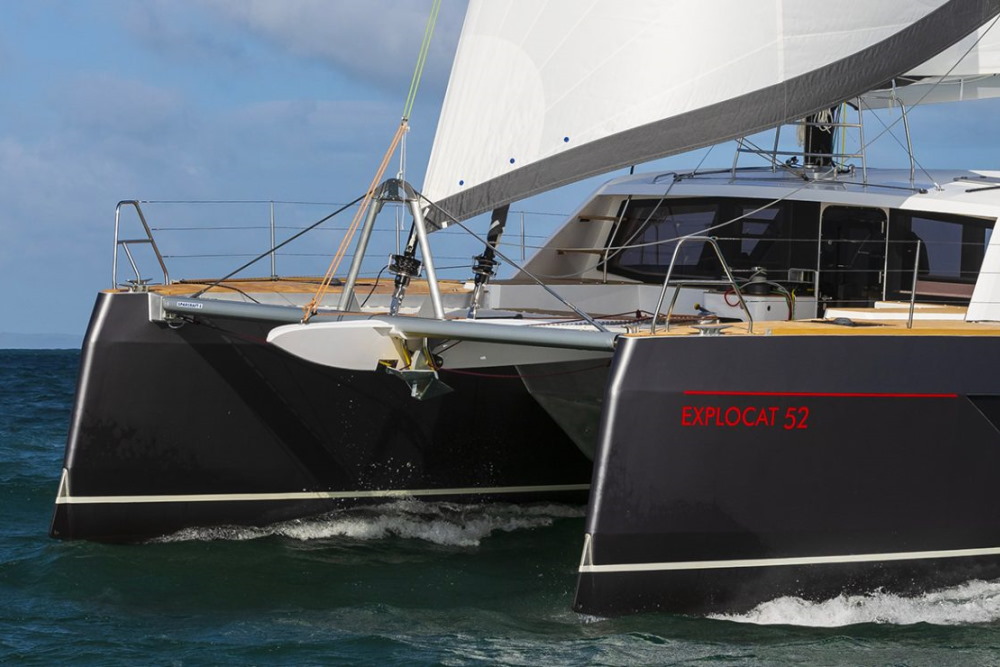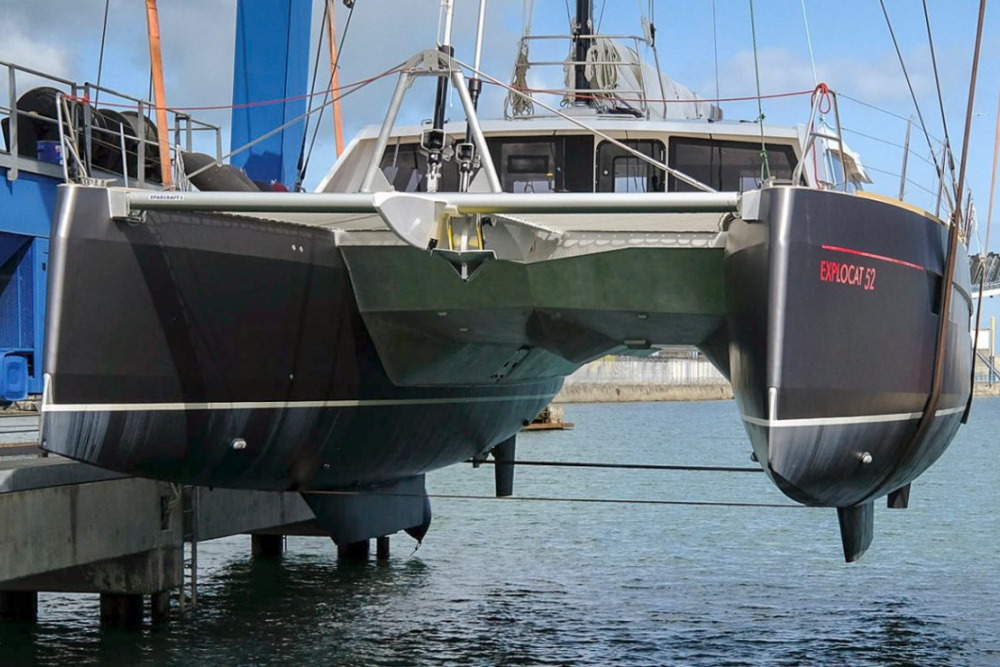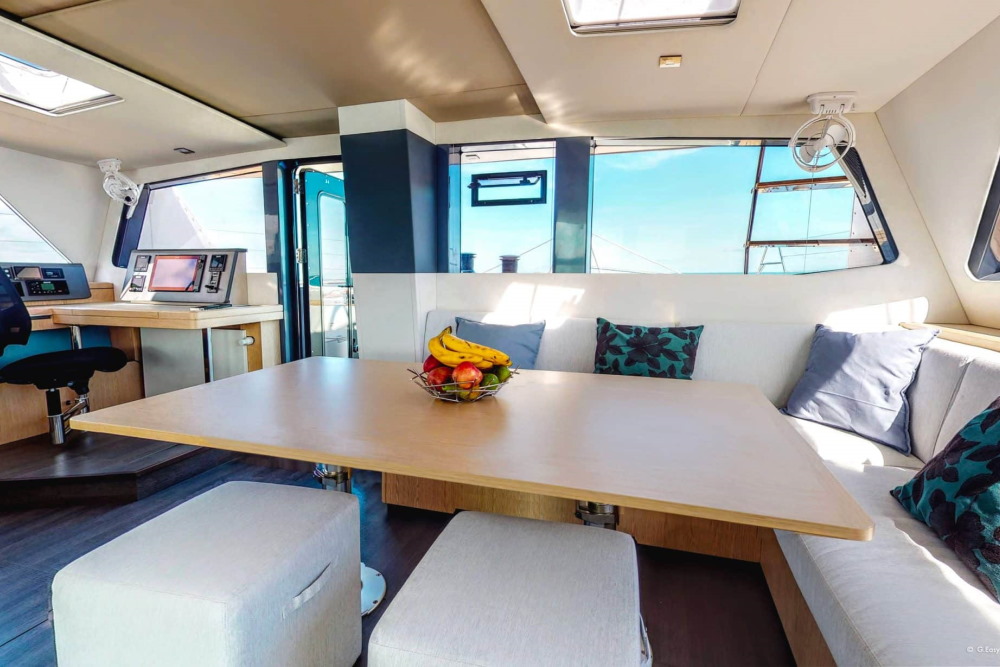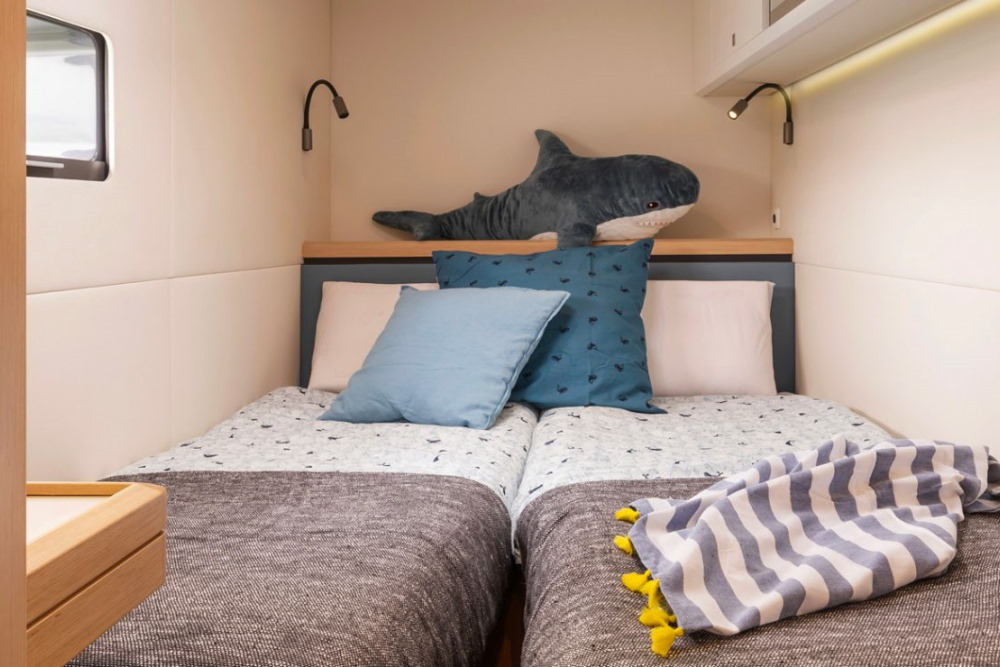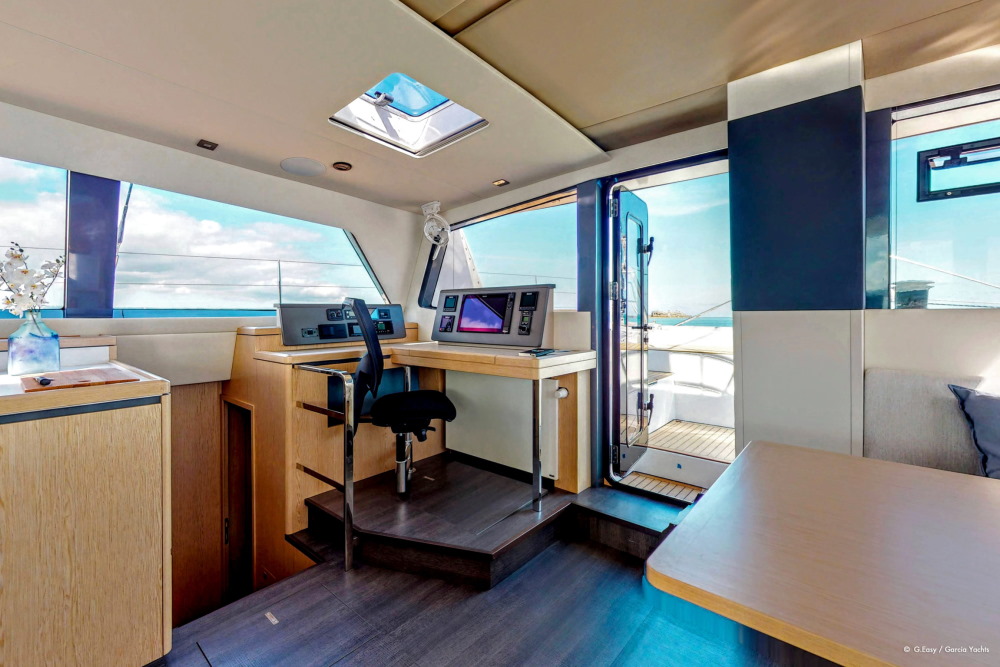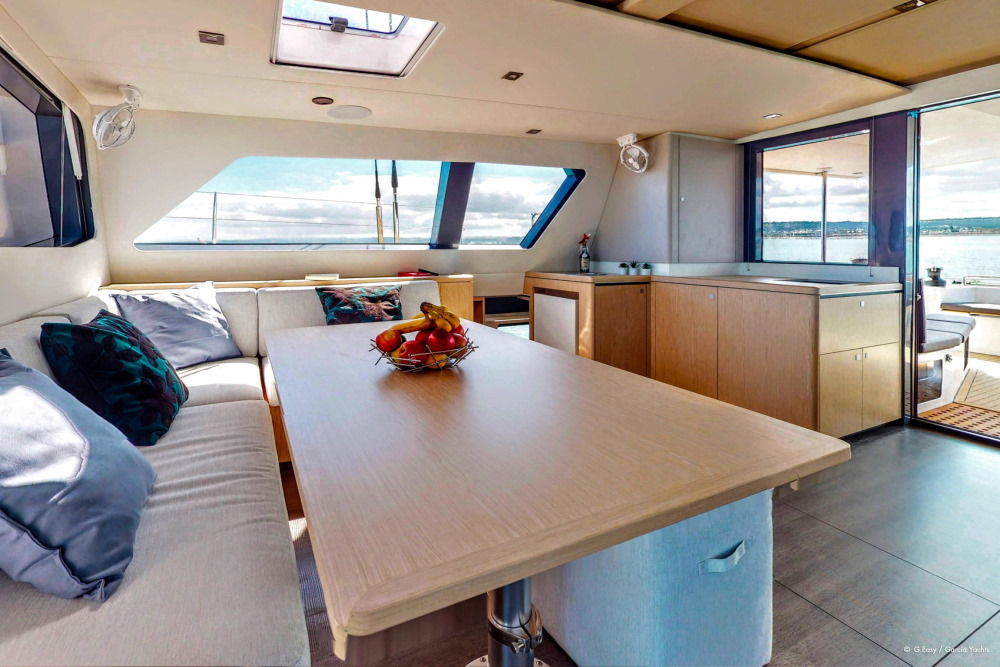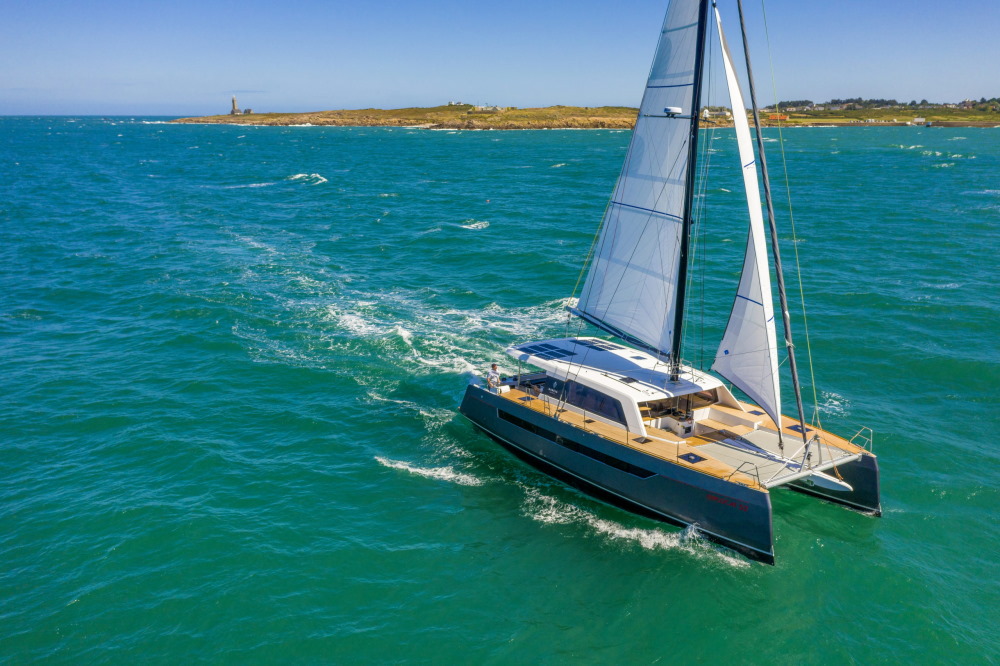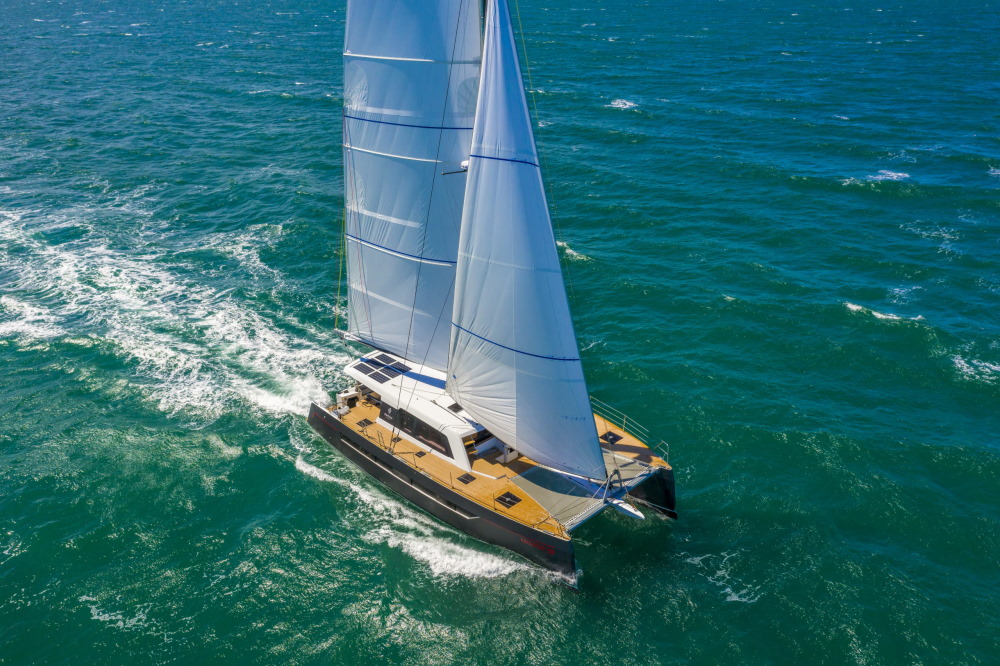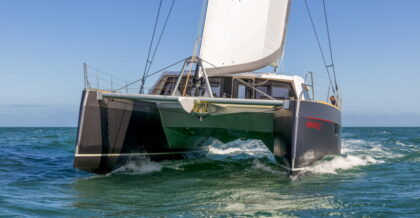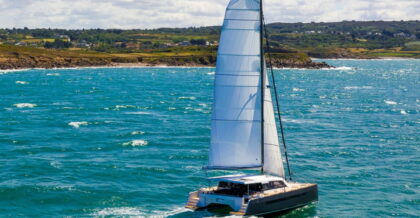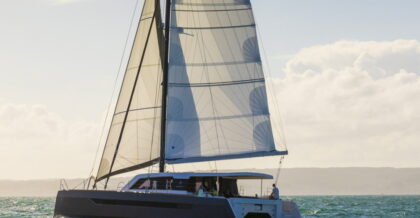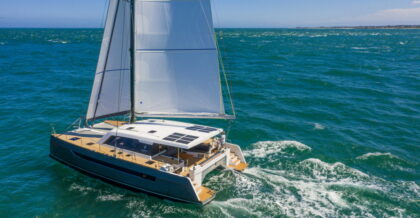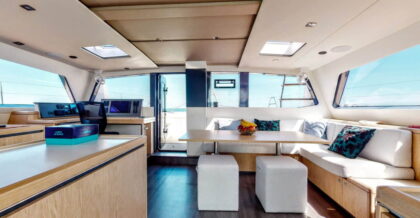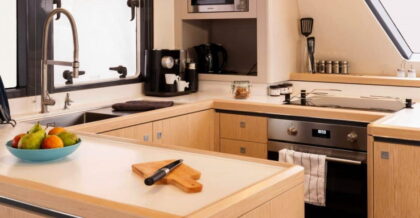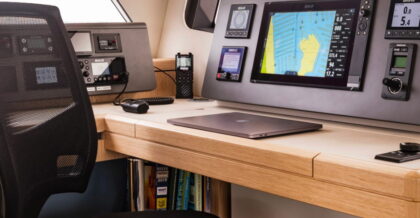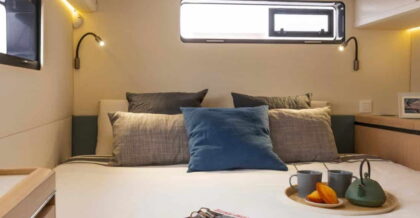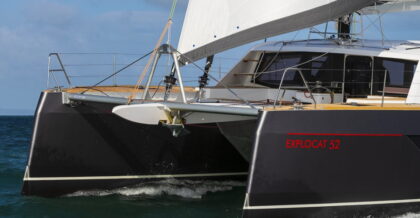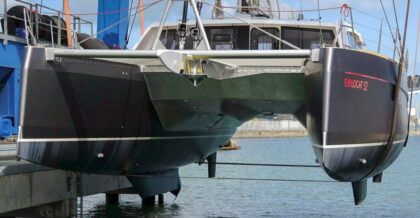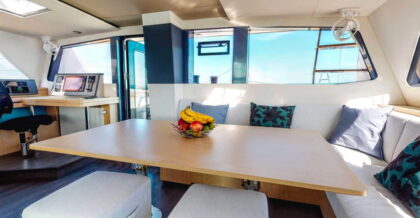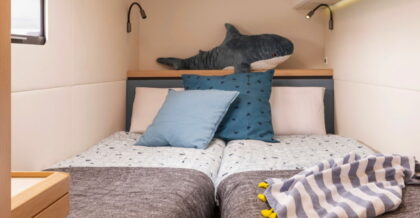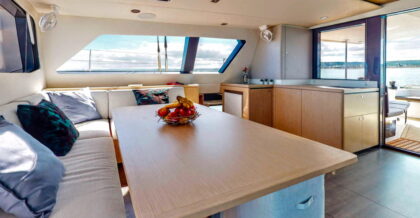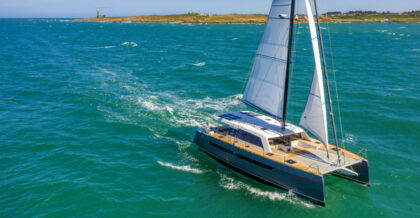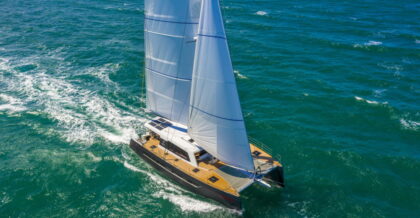Garcia Explocat 52
If you have your heart set on long voyages, you will be looking for a cat that is capable of knocking out high miles-per-day averages. And if you want to go off the beaten track into higher latitudes, you will need a yacht that is rugged and capable of taking knocks.
Aluminium yachts are nothing new in the monohull world, so I guess it was just a matter of time before someone launched an aluminium catamaran capable of exploring most corners of the planet safely and comfortably. Lucky for us, that someone is Garcia Yachts from Cherbourg, France and Pierre Delion who are the team behind the Explocat 52. This yacht is competing with the likes of the Windelo 54, but it promises safety in higher latitudes.
Garcia (part of Grand Large Yachting Group who also own Outremer and Gunboat) developed the Exploration 45 with Jimmy Cornell. The Explocat is their follow up on 2 hulls to this successful monohull.
The idea? A comfortable, safe long-distance catamaran that can be handled by a couple and that cruises at above average speed. And all that with a finish that you might expect on something out of the Privilege catamarans range.
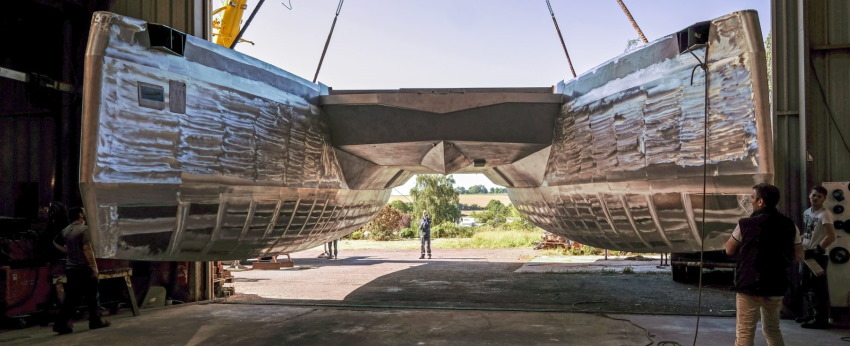
Let’s talk about how the Garcia Explocat 52 is built as this is one of her key USPs.
She’s built in aluminium of course. This material gives you better strength/weight ratios at this length – she comes in at 18.9 tonnes light displacement – slightly heavier than a Fountaine Pajot 51, for example, but you end up with a stiffer, more robust boat with a more powerful sail plan: the Explocat prioritises seaworthiness over flybridges.
You will squeeze more performance out of an Outremer 51, but the Garcia 52 is the more robust yacht. We are talking fibreglass versus aluminium, remember? The Garcia Explocat will always be heavier than a comparable fibreglass or carbon catamaran (read our Balance 482 review as an example). that is your trade off for strength, durability, sustainability and resale value.
The thinnest plating of the Explocat 52 is 5mm, which builds to 8, 10 and 12mm, reaching 14mm at the bottom of the hulls.
Fixed keels are welded to the bottom of the hulls (another safety feature for when you are off the beaten track). They are deeper and protect the rudders, allowing you to dry the boat out at low tide like a Prout.
Other safety features include fore and aft watertight bulkheads and skegs in front of the saildrives.
- Aluminum structural bulkheads
- Aluminum forward beam, composite forward longitudinal beam
- Chain plates and reinforcement plates welded directly onto the hull and deck structure
- Watertight forward and aft bulkheads welded directly onto the hull and deck structure
The aim on the Explocat 52 is to average 250 nm a day in decent conditions and with a steady breeze you should be hitting double figures with her powerful sail plan.
Even in lighter airs, the Explocat will get going quickly with a Code 0 or gennaker up. You won’t be matching TWS like you would in a Marsaudon, you’ll be around 2 knots slower, but this is still a nippy yacht.
Options of the rig include:
- Carbon mast with kevlar rigging
- Furling boom
- Lighting in spreaders
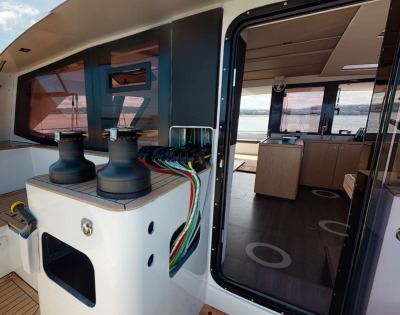
We really like the deck layout on this aluminium catamaran, which seems to have incorporated the best of modern catamaran design. Halyards and reefing lines can be managed in the forward cockpit which means you can safely shorten sail with just a short hop from the saloon.
This means the lines are shorter and there is less friction from being routed around blocks. Simpler is better in this case. There is also an option to run these back to the helms if you prefer.
There are options on the helm position. One owner has gone for twin aft helms, while the standard set up is a swivel (pendulum) helm at the main bulkhead- a configuration that first came to market on Balance catamarans.
The Mainsheet and traveller are handled on the aft crossbeam, while the genoa, solent and gennaker/code 0 sheets, plus furling lines, are managed with electric Lewmar 65 winches on either side of the cockpit.
Garcia have done a great job of helping you to keep the working areas tidy with big bags for your ropes to keep the yacht ship-shape. Reefing lines come back safely to the helm, (there is an option to manage these at the mast if you prefer shorter lines).
The rig has two headstays, with an overlapping furling jib on the main forestay, and a self-tacking furling solent.
Add the furling spinnakers and lighter wind sails, and you have a flexible package that will optimise your sail plan in most conditions with minimum fuss. There is a safety fuse on one of the mainsheet blocks to the boom. When this blows, the mainsail is depowered.
The forward cockpit is a safe area to work when working on your halyards, topping lift and lighter wind sails (gennaker, Code 0 etc), and it offers great visibility for ice or reef spotting, and for working the anchor windlass.
And just like a Gunboat, if you throw the door open in warmer climes when you are on the hook, the breeze flows nicely through the boat. It also makes a great spot for a sundowner.
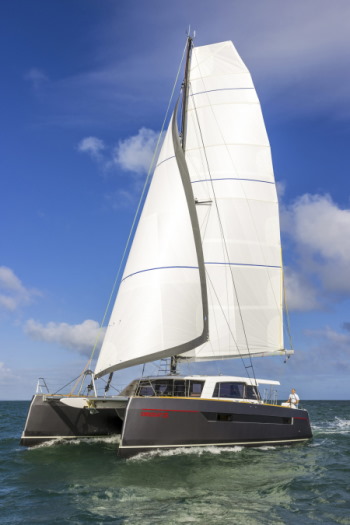
This catamaran has a lovely finish inside and down below thanks to Darnet Design. This is the same team that is behind the interiors of the Privilege Signature 580 and there are a lot of similarities in the look. It’s warm in the winter and cool in the summer.
If you are heading into the higher latitudes, you will appreciate the air extraction system that cycles air from the living area without having to open hatches.
The forward saloon windows have demisters, and there are lockers for your wet weather gear with ventilation and heating.
Up in the the saloon, the visibility is impressive and the whole area is bright. It’s a comfortable design with a sofa tucked in starboard forward and a galley with plenty of storage aft port of the saloon.
In pride of place is an ample forward facing nav station- this is a sailing boat after all.
Down below, various option are available on this semi-custom cat that boasts 2m headroom throughout.
There is space for one master cabin and two guest cabins in the standard version. Or go for the four cabin version.
Another option is to convert one of the forward cabins into a skippers cabin.
The aft cabins are soaked in natural light thanks to two hull windows, plus a wide aft window and opening ports aft and overhead.
Standard Specification
- Aluminium hull and deck
- Forefoot chain plates for towing, also works a a bumper and ice breaker
- High bridge deck clearance for heavy seas
- Forward and aft watertight aluminium bulkheads
- Seacock valves above waterline
- Rudders have sacrificial end-fittings
- GRP coachroof and hardtop bimini gives you thermic and acoustic insulation
- Thermic and acoustic insulation thanks to foam panels above waterline, and insulated floor
- Swing helm with 2 steering positions : a high position for the marina and fair weather, a low cockpit for rough weather
- Optional inside steering, within the saloon
- All sheets controlled from the aft cockpit for safety
- Sail handling area (halyyards, reefing lines) in forward cockpit
- Solid watertight door gives you access the forward cockpit
This is a robust catamaran designed for sailing and living onboard in both higher latitudes and tropical waters.
With it’s powerful sail plan and safety features, she’s been designed for sailing safely with a high degree of comfort in the roughest sea conditions. This is a catamaran that sits on its own in the market- there’s not much competition.
Is this the best aluminium catamaran on the market? Probably.
With our usual disclaimer that it depends on your options, you will be starting the conversation off at around €1.5 m. Add more budget for a carbon mast with kevlar rigging, furling boom, light wind sails plus fittings, hydranet mainsail, tempered glass, joystick on nav station, updrade to 75HP engines, genset, hydrogenerator, solar panels, lithium batteries, water maker, and so on. There are a lot of options to choose from. Fire up your spreadsheets!
| Disp. (Light) | 18.6 T / 18,960 lbs |
|---|---|
| D/L | 107 |
| SA/D | 24 |
| Power | 2x 60 HP |
| Water | 500 L / 132 US gal |
| Fuel | 2 x 500 L / 2 x 132 US gal |
| Length | 16.95m / 55.61′ |
| Beam | 8.2m / 26.9′ |
| Gennaker | 185 m² / 1991 sqft |
| Berths | 6/8/10 |
| SA/D* | 24 |
| Cabins | 3/4/5 |
| Sail Area (Upwind) | 167 m² / 1798 sqft |
| Draught | 1.5m / 4.92′ |
| Air Draught | 25.5m / 83.66′ |
Contact Katamarans
Share your details with us and we’ll be in touch to discuss further.
"*" indicates required fields
